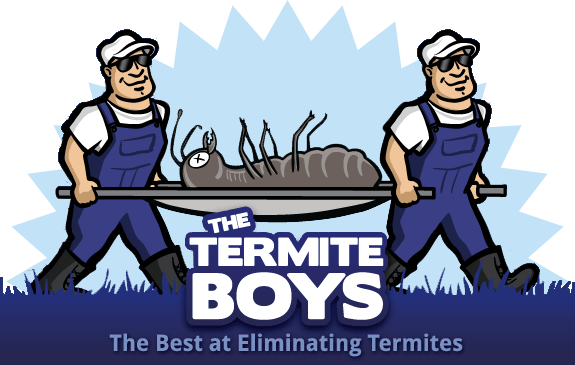Termites cause over $5 billion in property damage each year across the United States, yet most homeowners only think about these destructive pests when they spot visible damage. By then, colonies may have been feeding on your home’s structure for months or even years. The good news? Effective year-round termite prevention can protect your investment and give you peace of mind.
At The Termite Boys, we’ve been protecting North Shore and Eastern Massachusetts homes since 1982. Over four decades of experience has taught us that successful termite prevention requires a comprehensive approach that adapts to seasonal changes and addresses the unique vulnerabilities of your property.
This guide will walk you through proven strategies for maintaining year-round termite protection, helping you understand when these pests are most active and what steps you can take to keep them away from your home.
Understanding Termite Behavior Throughout the Year
Termites don’t hibernate during winter months like many other insects. Instead, they remain active year-round, though their behavior patterns change with the seasons. Understanding these patterns is crucial for effective prevention.
Spring Activity Surge
Spring marks the beginning of peak termite season. As temperatures warm and moisture levels increase, established colonies become more aggressive in their search for new food sources. This is also swarming season, when reproductive termites leave their colonies to establish new ones.
During spring months, you’re most likely to see flying termites around your property. These swarmers are attracted to light sources and often appear near windows, doors, and outdoor lighting fixtures. While seeing swarmers doesn’t necessarily mean you have an active infestation, it indicates that colonies are active in your area.
Summer Expansion
Summer heat drives termites deeper into the ground and further into structures as they seek cooler, moister environments. Underground colonies expand rapidly during these months, and worker termites become more aggressive in their foraging behavior.
This season presents unique challenges because termites may access your home through areas that remain cool and damp, such as basement foundations, crawl spaces, and areas around plumbing fixtures.
Fall Preparation
As temperatures begin to drop, termites focus on stockpiling food resources and preparing their colonies for winter. They may tunnel deeper into wooden structures during this time, making fall an critical period for prevention efforts.
Winter Persistence
Cold weather doesn’t eliminate termite threats. While activity may slow in some regions, termites in heated structures remain active throughout winter months. Subterranean species continue to forage through underground tunnels, and existing infestations can worsen during winter months when homeowners are less vigilant.
Essential Year-Round Prevention Strategies
Effective termite prevention requires consistent attention to several key areas around your property. These strategies work together to create an environment that’s less attractive to termites while eliminating common access points.
Moisture Control
Termites require moisture to survive, making water management one of your most powerful prevention tools. Start by ensuring proper drainage around your home’s foundation. Gutters should direct water at least three feet away from the structure, and downspouts should include extensions that carry water well beyond the foundation perimeter.
Check for and repair leaky faucets, pipes, and air conditioning units promptly. Even small leaks can create the moist conditions termites need to establish colonies. Pay special attention to areas where plumbing enters your home, as these locations often develop moisture problems that go unnoticed.
Basement and crawl space humidity levels should remain below 50 percent. Consider installing dehumidifiers in these areas if moisture levels consistently exceed this threshold. Proper ventilation is equally important—ensure crawl space vents remain unblocked and consider adding exhaust fans in poorly ventilated areas.
Eliminate Wood-to-Ground Contact
Direct contact between wooden structures and soil creates highways for termite access. Walk around your property and identify any areas where wood touches the ground directly. This includes deck posts, fence panels, firewood piles, and landscape timbers.
Maintain at least six inches of clearance between wooden siding and ground level. If you discover areas where this clearance doesn’t exist, consider adding concrete or metal barriers to break the contact. For essential structures like deck supports, use pressure-treated lumber or metal alternatives when possible.
Store firewood, lumber, and other wooden materials away from your home’s foundation. Keep these materials elevated on racks or concrete blocks, and maintain at least 20 feet of distance from your house when possible.
Landscape Management
Your landscaping choices can significantly impact termite risk. Dense vegetation near your foundation creates shade and retains moisture—conditions that attract termites. Maintain at least 12 inches of clearance between shrubs, flowers, and your home’s exterior walls.
Choose plants that don’t require frequent watering near your foundation. Native species often work well because they’re adapted to local moisture conditions and typically require less irrigation than exotic alternatives.
Mulch can be problematic if used incorrectly. While organic mulches provide benefits for plants, they also attract termites when placed directly against foundation walls. Leave a 6-inch barrier between mulch and your foundation, or consider using inorganic alternatives like gravel or rubber mulch in these areas.
Seasonal Inspection and Maintenance Schedule
Regular inspections allow you to identify potential problems before they become serious infestations. Create a schedule that addresses seasonal changes in termite behavior while maintaining consistent vigilance throughout the year.
Spring Inspection Priorities
Begin each spring with a comprehensive exterior inspection. Look for mud tubes along foundation walls, in crawl spaces, and around basement areas. These pencil-thick tubes are highways that subterranean termites build to travel between soil and wood sources.
Check wooden structures for hollow-sounding areas, which may indicate internal termite damage. Tap wooden beams, floor joists, and other structural elements with a screwdriver handle—solid wood produces a sharp sound, while termite-damaged wood sounds dull or hollow.
Examine areas around windows and doors for discarded wings, which swarmers shed after finding suitable nesting locations. Small piles of wings near entry points may indicate recent swarming activity.
Summer Monitoring
Summer inspections should focus on areas that remain cool and moist despite heat. Check basement walls, areas around water heaters and HVAC systems, and locations where pipes enter your home.
Look for signs of increased moisture, such as water stains, efflorescence (white mineral deposits), or musty odors. These conditions create attractive environments for termites and may indicate developing problems.
Fall Preparation
Fall inspections should emphasize structural vulnerabilities that cold weather might worsen. Check caulking around windows and doors, and repair any gaps that might allow moisture infiltration during winter months.
Examine wooden fencing, decks, and other outdoor structures for signs of damage. Fall is an ideal time to address these issues before winter weather complicates repair work.
Winter Vigilance
Winter inspections focus on interior areas where heating systems might mask termite activity. Check areas around furnaces, water heaters, and other heat sources where termites might remain active despite cold outdoor temperatures.
Monitor basement and crawl space conditions regularly during winter months. Ice dams, frozen pipes, and heating system condensation can create moisture problems that attract termites.
Professional Prevention Services
While homeowner vigilance forms the foundation of effective termite prevention, professional services provide expertise and tools that aren’t available to most property owners. Understanding when and why to engage professionals can significantly enhance your prevention efforts.
The Value of Professional Inspections
Professional termite inspectors receive specialized training that enables them to identify subtle signs of activity that homeowners might miss. They understand termite behavior patterns, recognize species-specific indicators, and can assess risk factors that aren’t obvious to untrained eyes.
Professional inspections also provide documentation that can be valuable for insurance purposes and real estate transactions. Many lenders require professional termite inspections before approving mortgages, and having recent inspection records can streamline these processes.
Treatment Options
Modern termite prevention treatments have evolved far beyond the broad-spectrum pesticide applications of previous decades. Today’s professional treatments include targeted baiting systems, liquid soil treatments, and wood treatments that provide long-term protection with minimal environmental impact.
Baiting systems work by attracting termites to monitoring stations placed around your property perimeter. When termites discover these stations, professionals replace monitoring devices with bait that termites carry back to their colonies. This approach can eliminate entire colonies while using minimal pesticide.
Liquid soil treatments create protective barriers around your home’s foundation. Applied properly, these treatments can provide protection for five to ten years or longer. The Termite Boys specialize in these applications and back their work with comprehensive warranties.
Warranty Protection
Professional termite services often include warranty protection that covers both retreatment and repair costs if termites return. These warranties provide peace of mind and can be transferred to new homeowners, adding value to your property.
At The Termite Boys, we offer a full five-year warranty on all our work, with renewal options for just $100 per year after the initial warranty period expires. This coverage protects your investment and provides ongoing professional monitoring of your property’s termite risk.
Signs That Require Immediate Attention
Certain indicators suggest that termites may already be active on your property. Recognizing these signs enables you to take swift action before damage becomes extensive.
Mud tubes along foundation walls or basement areas require immediate professional evaluation. These structures indicate active termite highways between soil and food sources. Don’t disturb these tubes before professional inspection—they provide valuable information about termite travel patterns and colony locations.
Swarmers inside your home suggest that a colony has matured nearby and may already be established within your structure. While outdoor swarming doesn’t necessarily indicate infestation, indoor swarmers require prompt professional assessment.
Hollow-sounding wood, sagging floors, or doors and windows that stick unexpectedly may indicate structural damage from termite feeding. These symptoms develop gradually and often aren’t noticed until damage is significant.
Frass—termite droppings that resemble small wood pellets or coffee grounds—around wooden structures indicates active feeding. Different termite species produce distinctive frass patterns, which professionals can use to identify species and assess infestation extent.
Cost-Effective Prevention Investment
Year-round termite prevention represents a sound financial investment when compared to the cost of treating active infestations and repairing structural damage. Prevention costs typically range from hundreds to low thousands of dollars, while termite damage repairs can reach tens of thousands of dollars.
The Termite Boys offer competitive pricing with a guarantee to beat any comparable quote by at least 10 percent. This commitment reflects our confidence in providing effective, affordable protection that delivers genuine value to homeowners.
Consider prevention costs as insurance premiums that protect your property investment. Unlike traditional insurance, effective termite prevention can completely eliminate the risk it’s designed to address, making it one of the most cost-effective forms of property protection available.
Protecting Your Home Investment
Termites pose a constant threat to residential properties throughout Massachusetts, but comprehensive year-round prevention can provide complete protection for your home and family. The strategies outlined in this guide work together to create an environment that termites find uninviting while eliminating the access points they need to establish infestations.
Successful termite prevention requires consistent attention throughout the year, not just during peak activity seasons. By maintaining proper moisture control, eliminating wood-to-ground contact, managing your landscape appropriately, and conducting regular inspections, you can significantly reduce your property’s termite risk.
Professional services enhance these efforts by providing expertise, specialized treatments, and warranty protection that ensures your prevention investment delivers lasting results. The Termite Boys bring over four decades of experience to every prevention program, backed by comprehensive warranties that protect your property and your peace of mind.
Don’t wait until you spot termite damage to take action. Contact The Termite Boys today at (781) 599-4317 to schedule your comprehensive property evaluation and learn how our year-round prevention services can protect your home investment.

